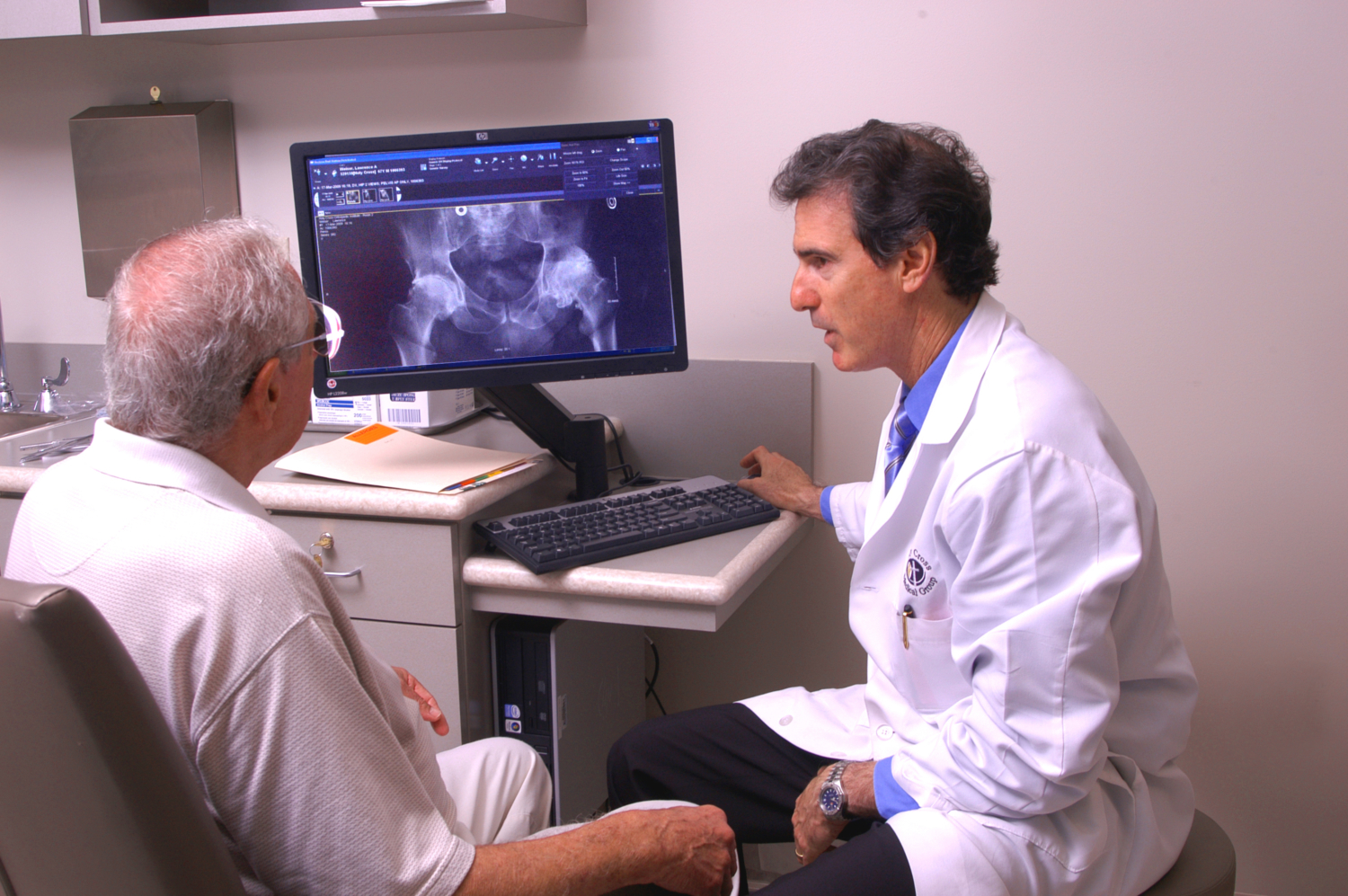Hip Replacement Surgery
Hip replacement surgery, also called total hip arthroplasty, involves removing a diseased hip joint and replacing it with an artificial hip joint or prosthesis. Frequently hip replacement is performed when a person’s hip becomes damaged and painful from arthritis. If abnormal biomechanics led to the arthritis, then the surgery must also correct the abnormal hip biomechanics.
Hip replacement surgery is generally performed when limitations and painful symptoms can no longer be controlled with non-operative treatments.
In Total Hip Replacement (THR) surgery, diseased cartilage and bone of the hip joint is surgically replaced with a prosthesis. The prosthesis consists of a ball which is made of metal or ceramic and a metal stem (often titanium), which holds the ball in a precise position. During the surgery, the stem is inserted down the marrow cavity of the femur. The ball is inserted into the new socket, which consists of a liner made of plastic, ceramic or metal and a titanium shell. The shell is placed next to living bone so that bone grows into it. Learn more about THR.
A bipolar hip or endoprosthesis refers to a hip replacement where only the ball of the hip joint is replaced; the socket is not replaced. A prosthetic ball is attached to a stem which is inserted into the marrow cavity of the upper femur. The new ball fits inside of the patient’s natural socket. A specific kind of endoprosthetis is called a bipolar hip. Imagine a standard size prosthetic ball, often used in total hip replacements, now inserted inside a larger ball which is inserted into the patient’s natural socket. This results in the hip being able to move in two planes: between the inner ball and out ball and between the out ball and the natural socket. The advantage is more stability which means lower risk of hip dislocation. This type of reconstruction is most often appropriate for someone with a hip fracture through the femoral neck with no pre-trauma hip arthritis. Learn more about the advantages and disadvantages of this type of hip replacement.
The materials chosen for these implants have been studied extensively over the years and are used because of their biocompatibility (accepted by your body), resistance to corrosion, and mechanical properties. Wonderful recent advances by scientists and implant designers have vastly improved the wear characteristics of implants so they can last in our bodies much longer. Learn more about Highly Cross-linked Polyethylene.
See Video Testimonials from Dr. Leone’s Grateful Patients – Click Here
Hip Revision Surgery
Revision hip replacement surgery is surgery performed on a person who has already undergone total hip replacement surgery. Typically, a revision surgery requires more operative time, expertise and special equipment and has a higher risk for complications. Revision surgery involves removing the old prosthesis and replacing it with a new one as well as removing surrounding tissue which is no longer healthy. The procedure typically requires a more extensive incision and dissection.
Fortunately, the advent of specialized instruments and techniques has improved outcomes on these complex re-do surgeries. Improved bone ingrowth surfaces combined with specialized revision modular implant systems and bone grafting procedures have vastly improved our ability to reconstruct the hip and achieve an excellent and predictable result.
See Video Testimonials From Dr. Leone’s Grateful Patients – click here
Treatments
If surgery is indicated, then Dr. Leone will recommend the procedure that will offer the best possible outcome in terms of mobility and quality of life.
Treatments include:
Primary Total Hip Replacement
Revision Total Hip Replacement
Femoral Reconstruction with Bone Grafting
Bipolar or Partial Hip Replacement
Open or Closed Reduction with Internal Fixation of Fractures


